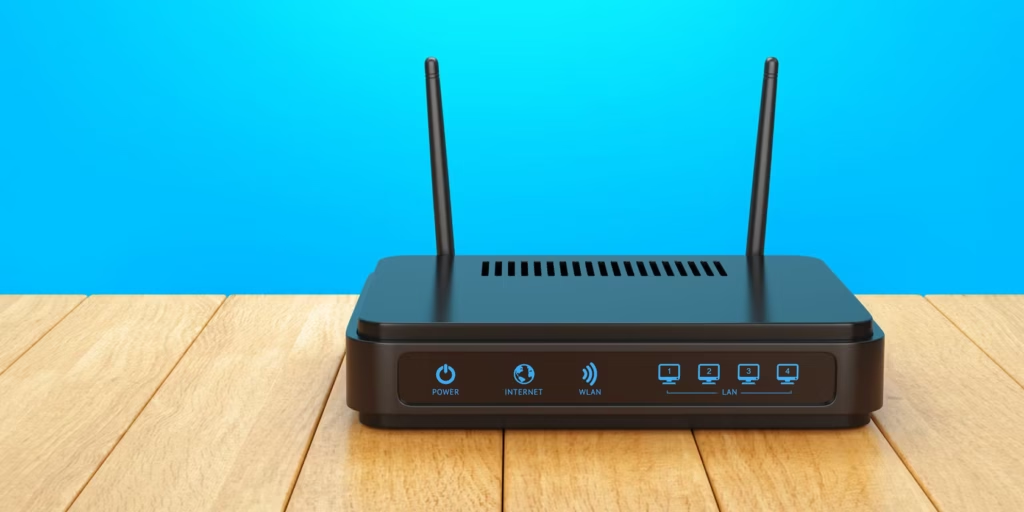In today’s digital age, connectivity is a fundamental aspect of our lives, whether at home, in the office, or on the go. One of the central devices that facilitate our daily internet activities is the router. This critical piece of networking equipment acts as a traffic controller, managing the flow of data packets between different networks and enabling seamless communication. This article will delve into what a router is, its essential functions, and how it works to ensure robust connectivity.

Understanding routers is crucial not only for tech enthusiasts but also for anyone who relies on the internet for personal or professional use. From streaming videos to online gaming, the performance of a router can significantly impact your overall experience. In the sections that follow, we will explore the various types of routers, their functions, and how they manage network traffic efficiently.
What is a Router?
A router is a networking device that routes data packets between different networks, such as your home network and the internet. Unlike a switch, which connects devices within a single network, a router connects multiple networks, allowing them to communicate with each other. This essential device serves as the gateway for devices like computers, smartphones, and tablets to access the internet and share resources.
The Role of Routers in Networking
Routers perform several vital functions that are crucial for efficient network management:
- Data Packet Forwarding: Routers receive data packets from one network and forward them to the appropriate next destination.
- Network Address Translation (NAT): This function allows multiple devices within a local network to share a single public IP address, enhancing security.
- Traffic Management: Routers analyze traffic patterns to prevent congestion and ensure that data packets reach their destinations quickly and reliably.
- Firewall Protection: Many routers come equipped with built-in security features that protect the network from potential threats.
Types of Routers
Routers come in various shapes and sizes, each suited for different applications. Here are the most common types:
1. Wired Routers
Wired routers connect directly to devices through Ethernet cables. They offer reliable and high-speed connections, making them ideal for environments where stability is paramount, such as in offices or gaming setups. However, they limit mobility since devices must be physically connected.
2. Wireless Routers
Wireless routers provide connectivity without the need for cables, allowing devices to connect to the network via Wi-Fi. They are popular in homes and public places due to their ease of use and flexibility. However, wireless connections may be subject to interference and slower speeds compared to wired connections.
3. Core Routers
Core routers are used by internet service providers (ISPs) to manage data traffic within their networks. These high-capacity devices are designed to handle vast amounts of data, making them essential for efficient internet connectivity on a larger scale.
4. Edge Routers
Edge routers reside at the boundary between an ISP network and external networks, such as the internet. They direct incoming and outgoing traffic and manage data flow, ensuring optimal performance and security.
How Routers Work
The operation of a router is based on several key processes that facilitate data communication across networks.
Data Packet Routing
When a device on a network sends data, it is broken down into smaller units called data packets. Each packet contains essential information, including the destination IP address. The router examines this address and uses routing tables to determine the most efficient path for the packet to reach its destination.
Routing Protocols
Routers use various routing protocols to facilitate communication between networks. These protocols help routers determine the best paths for data packets based on factors such as network conditions and traffic loads. Common routing protocols include:
- RIP (Routing Information Protocol): A simple protocol used for smaller networks.
- OSPF (Open Shortest Path First): A more complex protocol designed for larger, more dynamic networks.
- BGP (Border Gateway Protocol): Used to manage how packets are routed across the internet.
Network Address Translation (NAT)
NAT is a critical function of routers that allows multiple devices on a private network to access the internet using a single public IP address. This not only conserves the limited supply of IP addresses but also adds a layer of security by keeping internal IP addresses hidden from external networks.
Choosing the Right Router for Your Needs
When selecting a router, consider the following factors to ensure your connectivity needs are met:
- Speed and Performance: Look for routers that offer high data transfer rates suitable for your internet plan and usage scenarios.
- Range: Consider the size of your home or office and choose a router that provides sufficient coverage to eliminate dead zones.
- Security Features: Opt for routers with built-in firewalls and encryption protocols to protect your data and devices.
- Number of Ports: If you have multiple wired devices, ensure the router has enough Ethernet ports.
Frequently Asked Questions (FAQ)
1. What is the main function of a router?
The primary function of a router is to route data packets between different networks, allowing devices to communicate with each other and access the internet.
2. How does a router differ from a switch?
While both routers and switches are networking devices, routers connect multiple networks, whereas switches connect devices within a single network.
3. Can I use a router without an internet connection?
Yes, a router can function as a local network hub even without an internet connection, allowing devices to share files and resources.
4. What is Wi-Fi, and how does it relate to routers?
Wi-Fi is a technology that enables wireless communication between devices. Routers with Wi-Fi capability allow devices to connect to the network without physical cables.
5. How often should I upgrade my router?
Consider upgrading your router every 3-5 years or sooner if you experience connectivity issues, require higher speeds, or if security vulnerabilities are discovered.
Conclusion
In summary, routers are essential networking devices that manage traffic between different networks, ensuring seamless connectivity in our increasingly digital world. By understanding how routers work and the various types available, you can make informed decisions when it comes to choosing the right router for your needs. Whether you rely on a wired connection for stability or prefer the convenience of wireless access, a well-functioning router is crucial for optimal internet performance. With the right knowledge and tools, you can enhance your connectivity experience and enjoy the benefits of a robust network.
📰 Original Source
Este artigo foi baseado em informações de: https://tecnoblog.net/responde/o-que-e-um-roteador-veja-para-que-serve-e-como-funciona-o-dispositivo-de-rede/



